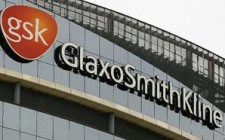M&S to focus on franchise-held business worldwide
Vjmedia Works | November 09, 2016
In a comprehensive review of its 466 International stores, the brand also reaffirms its commitment to growing its joint venture business in India with Reliance Retail along with its growing online reach across the country via leading fashion platforms Myntra and AJIO.
 In order to promote a more sustainable, profitable and customer-focused international business, Marks & Spencer is planning to focus on franchise-held businesses closing 53 wholly-owned stores in 10 markets along with strengthening its food franchise business in France.
In order to promote a more sustainable, profitable and customer-focused international business, Marks & Spencer is planning to focus on franchise-held businesses closing 53 wholly-owned stores in 10 markets along with strengthening its food franchise business in France.
British fashion brand Marks & Spencer proposes to operate with fewer wholly-owned markets worldwide and have a greater focus on its established joint ventures. In a comprehensive review of its 466 International stores, the brand also reaffirms its commitment to growing its joint venture business in India with Reliance Retail along with its growing online reach across the country via leading fashion platforms Myntra and AJIO.
With 58 Marks & Spencer stores across 27 Indian cities, India has the largest number of M&S stores outside of the UK. Through the joint venture partnership, the brand has been continuing to grow its presence across the country opening circa 10 new stores across India every year, which it sets to continue.
Venu Nair,Managing Director of Marks & Spencer Reliance India, said, “Customers are at the heart of everything we do at Marks & Spencer. The Marks & Spencer brand really resonates with customers in India and combined with our established store estate, online offering and the growth potential in the Indian market, Marks & Spencer will continue to grow in scale and relevance in the country.”
According to the brand’s strategic review of its International business, it has shown that the Group’s International business is separated into two parts: an owned business that is loss making in a number of markets and a profitable franchise business which made a profit of £87m last year. Marks & Spencer will also use its local market customer insights to build a more sustainable international business by focusing on improving customers’ experience and driving profitability.
Marks & Spencer has 268 franchise stores in 34 markets, and an established joint venture in Greece as well as India. Working together with its partners here, the Group will leverage their scale, infrastructure and local expertise. M&S will also continue to develop its Food franchise business in France where there is demand for its quality innovative products at convenient locations.
M&S will continue to operate owned businesses in the Republic of Ireland, Hong Kong and Czech Republic which are more profitable with strong brand awareness, established store estates and customer base.
Marks & Spencer also trades online in 21 markets reaching customers through its fully localised owned and operated websites, via established marketplaces such as Myntra in India and Zalando in Europe and with its established franchise partners.
Last year M&S’s owned businesses in ten markets made a loss of £45m on revenues of £171m, some markets have now been loss making for at least five years. The review has found this is due to a number of factors including its fragmented owned-store portfolio and lack of scale. Additionally, there is limited opportunity for future growth in these markets. Following the review Marks & Spencer is proposing to close all of its 53 wholly-owned stores in ten markets, including seven in France and 10 in China, as well as its stores in Belgium, Estonia, Hungary, Lithuania, the Netherlands, Poland, Romania and Slovakia. M&S is therefore today starting consultation with circa 2,100 employees about its proposals. At a Group level, if, following the outcome of the consultation, Marks & Spencer goes ahead with these proposals, it will incur non-underlying costs in the range of c.£150m to £200m, of which the vast majority will be cash, largely driven by property-related costs and redundancy costs.








